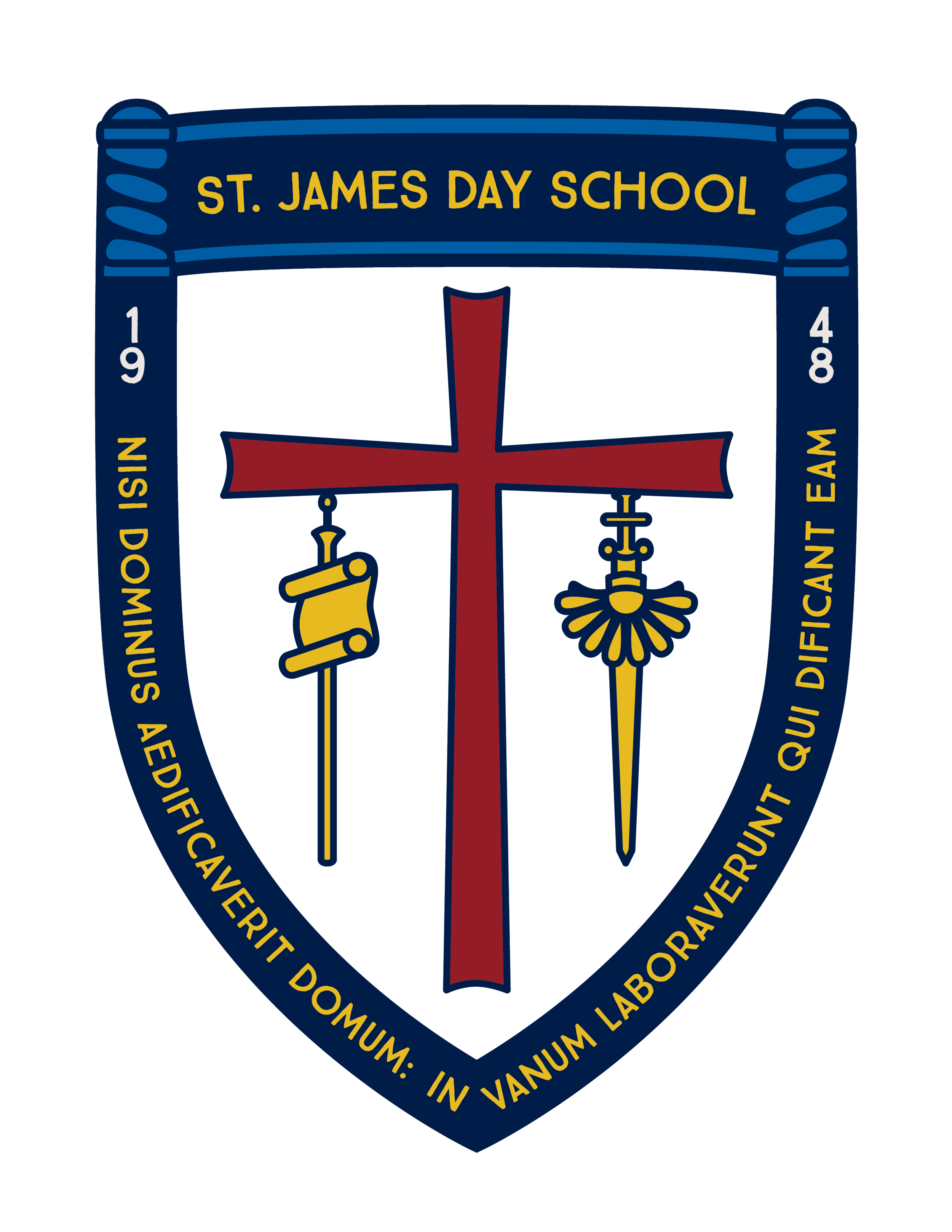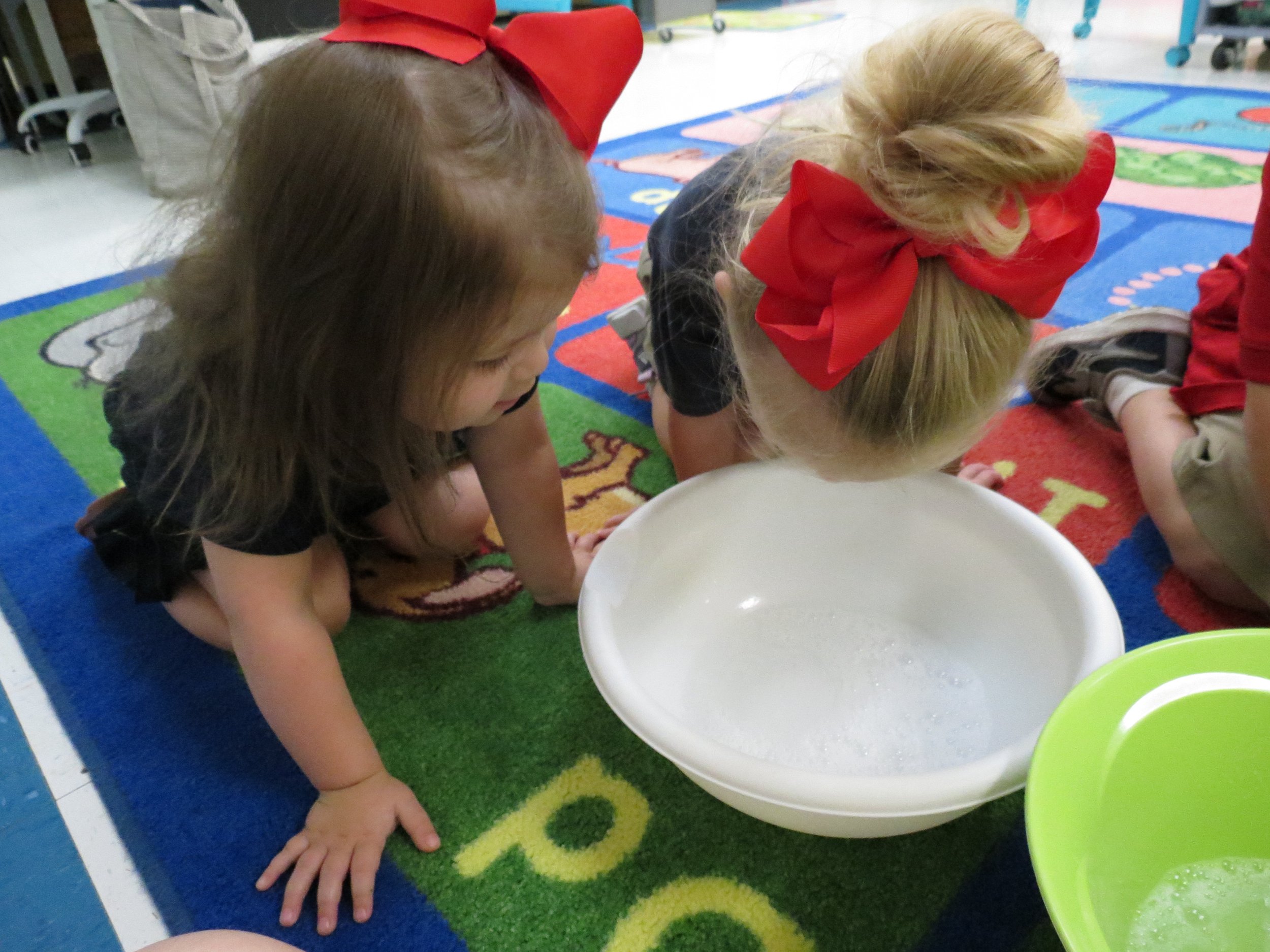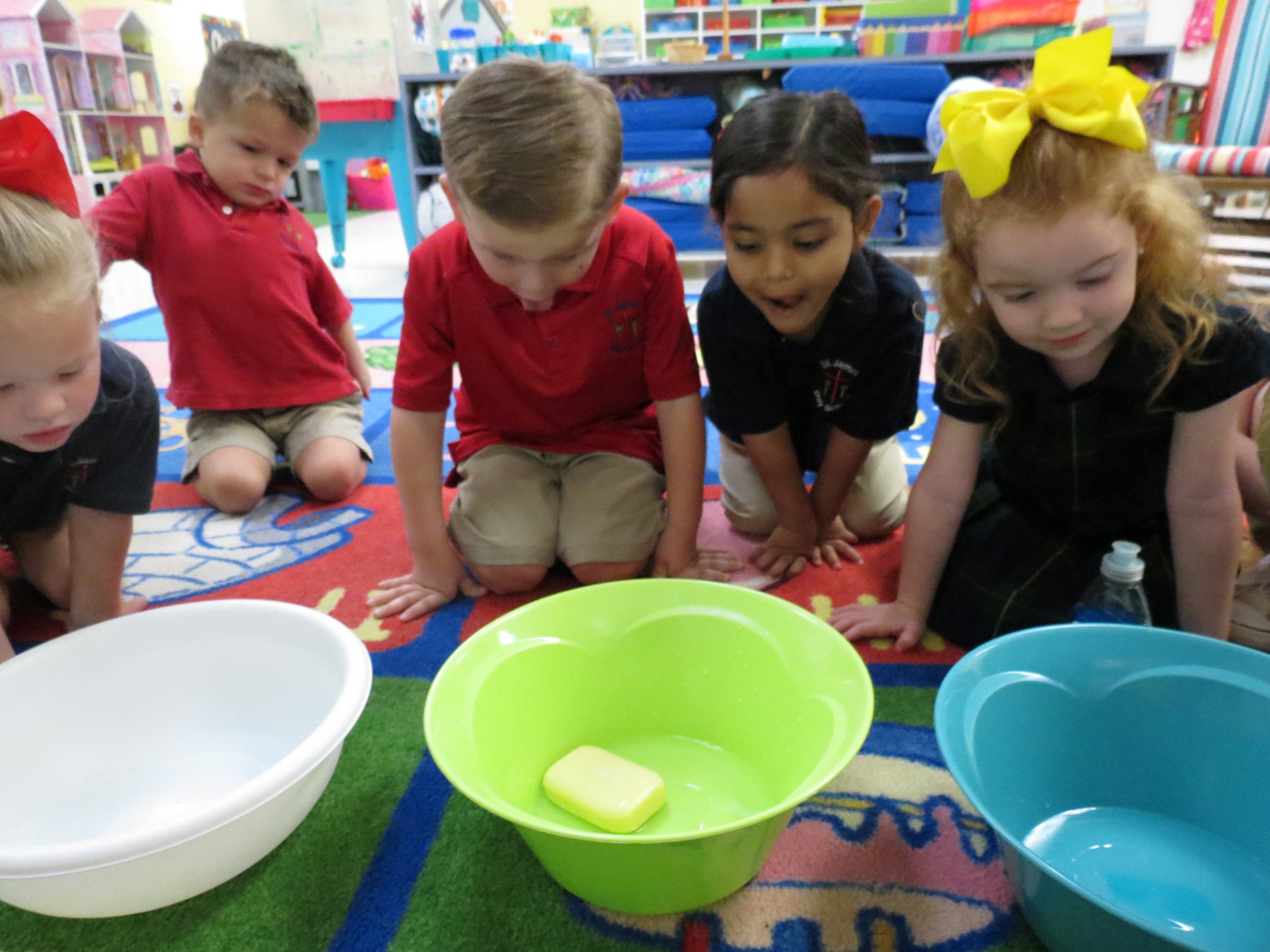Goldilocks and the three bears
We were amazed to see Goldilocks on our playground! She helped us learn the concept of large, medium and small. Goldilocks told us that she was sorry about eating baby bear's porridge and breaking his chair. The students learned an important lesson in manners this week. A special thank you to Kerrigan Irvan for giving us a WOW moment!
Play laundromat and Soap EXPERIMENT
The students had to guess what soap would make the most bubbles. We used liquid, bar and power soap for our experiment. The children determined the liquid soap created the most bubbles. We used tally marks to count and keep track of our information. We also set up a pretend laundromat and worked on fine motor skills with the clothesline.
Fall Centers
With Fall finally here, the children helped me put fall decorations in our sensory bin and they have been enjoying making their own play-doh pumpkin.













































































































